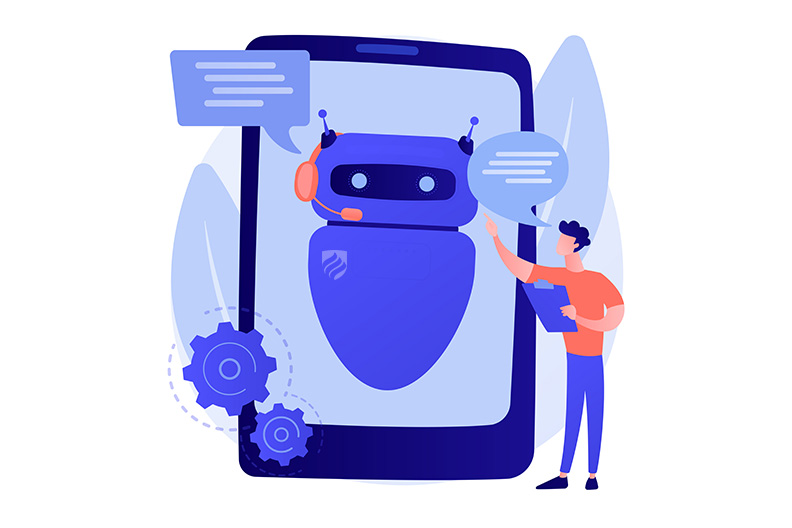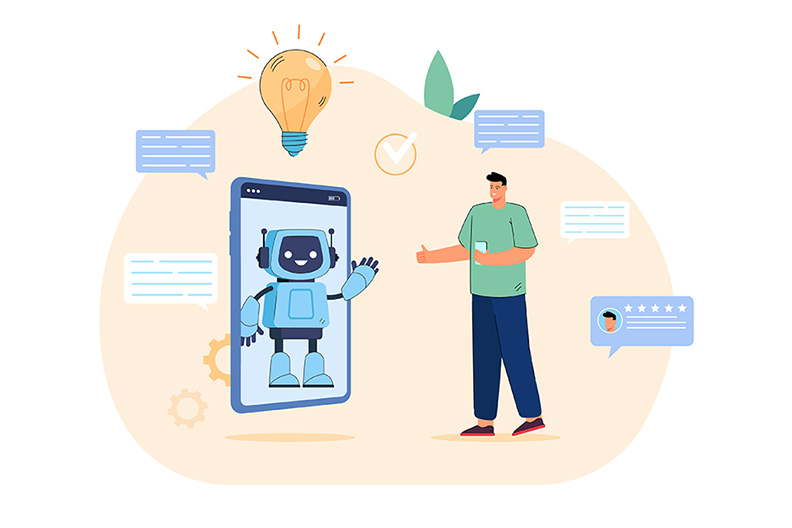How Today’s AI Will Impact Your Profession: A Panel Discussion
BY JAMES KULICH | 5 MIN READ

Artificial Intelligence (AI) is here to stay. It has woven its way into our society through many avenues. As I’ve written about in this three-part series (A Path to Data Literacy and The Current State of AI), we are not to be scared or awed of its existence. Rather, we need to lean in, to listen and prepare to adapt to the uses that present themselves. Through a little preparation and understanding, you can utilize uses of AI in your workplace to thrive in the coming year.
AI Panel and Their Experience
Earlier this fall, I had the pleasure of hosting a panel discussion titled How Today’s AI Will Impact Your Profession and How You Can Prepare. The panelists, all of whom are faculty members in Elmhurst University’s Master’s program in Data Science and Analytics, were Jobi Abraham, Debbie Chafee, Ryan Elmore and Stephen Gnidovec. They offered a wealth of insights from their professional backgrounds in health care, financial services, consulting and supply chain management analytics. Together we explored the nuances of uses of AI and how each industry can become efficiently integrated with the new technology.
Six Steps in Utilizing AI
- Gain a basic, hands-on understanding. Step one, for anyone, is to gain a basic, hands-on understanding of what today’s artificial intelligence technologies have to offer, especially generative AI tools such as ChatGPT. Explore examples of these tools in action. Try some for yourself. There are currently over 120,000 large language models available on Hugging Face in various stages of development, many of which are open for exploration.As you engage these tools, think in terms of being conversational. This is no longer just about searching the Web.
- Keep the larger context at the center of your focus. Business acumen is more important than ever. A clear understanding of business goals is essential to crafting good use cases for AI tools and to ensuring that these powerful technologies are applied in ways that are ethical, effective, and well governed. In the end, you’ll need to explain why the output is what it is and why it matters.
- Realize that none of this is magic. A successful project will involve coordinated use of many tools and techniques, including generative AI, machine learning, robotic process automation, business intelligence capabilities, etc. Good planning and orchestration provide the glue to hold these pieces together.
- Don’t fear the data. Develop your data skills incrementally. When using data at any level, aim to develop minimally viable products that can be expanded and improved with experience. There is an enormous amount of value in data caught in old applications. Find ways to bring these data assets to life.
- Learn prompt engineering. Today’s generative AI tools enable anyone to complete complex technical tasks by simply asking the right questions using natural language. Practice this skill no matter what role you have.
- Develop the mindset of a lifelong learner. Twenty years ago, you needed a Ph.D. to play in this space. No longer. Good teams now include people with technical skills and people whose capabilities complement these. Creativity, empathy, and thought leadership, joined with a good fundamental understanding of what today’s technologies can do, are needed now more than ever before.
Going Further: Practical Uses of AI
To get a sense of what’s possible, here are a few examples of use cases our panelists experienced or are developing.
Education: Creating a 24-7 interactive academic support system for college students using generative AI trained on information captured from large numbers of student-faculty interactions via a variety of media.
Health Care: Simplifying and enhancing the record keeping process for physicians, who may see 100 patients on a given day, by using AI to transcribe written notes, summarize the transcriptions, submit the summaries to an electronic medical records system, and signal cases where opportunities for medical treatment may have been missed that can be addressed in future visits.
Marketing: Reverse engineering a marketing campaign by using AI to capture prior posts on social media, translate images and videos to text, add current relevant information such as demographics, and prepare a recommendation for the next marketing campaign.
Financial Services: Serving clients when and how they want to interact by using AI to offer real-time guidance for live customer service agents tailored to a client’s specific situation and by using AI in a different way to create focused, personalized options for a customer seeking planning advice online.
Manufacturing: Enhancing an organization’s ability to differentiate its level of service by using AI to improve forecast accuracy at the operations level and the delivery level, enabling more goods to be made and delivered when and where customers desire.
Staffing: Anticipating and meeting staffing needs in an environment where unplanned absences are common by using AI to more precisely forecast the true number of employees needed on a specific day and to best deploy employees when an unexpected staff shortage occurs.
Coding: Reducing the need to develop code from scratch and improving code quality by using AI to generate baseline code from a natural language description of a business need and tapping AI’s capability to verify, debug, and explain code.
Learn More at Elmhurst University
The professors in the Data Science and Analytics Program at Elmhurst University are very active in the ongoing usage and research of AI. If you are looking to develop deep data skills, Elmhurst’s Master’s program in Data Science and Analytics can help. Fill out the form below to connect with us.










